Title: 15th Annual Coastal Bend Hamfest
Location: Aransas Pass
Link out: Click here
Description: Keep checking the web site. We have some great plans for this year.
Start Time: 8:00
Date: 2013-11-02
End Time: 14:00
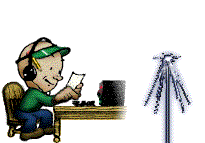 In many areas I have noticed a tendency of people making a distinct effort to sound like a “LID” on local repeaters. Since this appears to be the new style in Amateur Radio, I thought I would present this incomplete guide to radio LID-dom.
In many areas I have noticed a tendency of people making a distinct effort to sound like a “LID” on local repeaters. Since this appears to be the new style in Amateur Radio, I thought I would present this incomplete guide to radio LID-dom.
The following is what I call: “How to sound like a Lid in one easy lesson.”
- Use as many Q signals as possible. Yes, I know they were invented solely for CW and are totally inappropriate for two-meter FM, but they’re fun and entertaining. They keep people guessing as to what you really meant. For example, “I’m going to QSY to the kitchen.” Can you really change frequency to the kitchen? QSL used to mean “I am acknowledging receipt,” but now it appears to mean “yes” or “OK.” I guess I missed it when the ARRL changed the meaning.
- Utilize an alternative vocabulary. Use words like “destinated” and “negatory.” It’s OK to make up your own words here. “Yeah Bill, I pheelbart zaphonix occasionally myself.”
- Always say “XX4XXX” (Insert your own call) “for I.D.” Anything that creates redundancy is always encouraged. That’s why we have the Department of Redundancy Department. (Please note that you can follow your call with “for identification purposes” instead of “for I.D.” While taking longer to say, it is worth more “LID points”.
- The better the copy on the repeater, the more you should use phonetics. Names should be especially used if they are short or common ones. I.E. “My name is Al… Alpha Lima” or “Jack.. Juliet Alpha Charlie Kilo.” If at all possible use the less common HF phonetics “A4SM… America, Number Four, Sugar Mexico.” And for maximum “LID points”, make up unintelligible phonetics. “My name is Bob… Billibong Oregano Bumperpool.”
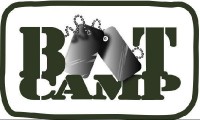 Another Section Of Our 200 Page
Another Section Of Our 200 Page
“Jump Team Boot Camp” Training Manual
AFTER SITE SURVEY: Assembling Your Tent Structures
by Bob W2IK
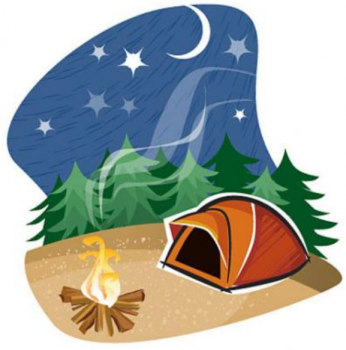 Setting up a tent can seem like a complex task especially for any first-time jump team member.
Setting up a tent can seem like a complex task especially for any first-time jump team member.
Tents are a vital piece of Em-Comm gear, for sure, but many frustrated jump team members have cursed their tent as they’ve tried to set it up in the dark or during inclement weather without proper preparation.
However, once you’ve set up a tent several times, it becomes a familiar routine that can easily be repeated even in the most difficult Em-Comm conditions, and once you’ve mastered setting up one kind of tent, it will then be easier to set up other kinds of tents, be they simple or complex.
Remember that your tents (structures) are just as important as setting up your communications gear. After all, you will be living and working in them for many days. Here are some basic steps that will help you set up your tent structures quickly and efficiently.
Practice setting up your tent before you go to your duty site to deploy. Setting up your camping tent at least a couple times, directions in hand, before twilight is a good idea as you’ll never know what time of day (or night) you’ll be doing it for real. While some camping tents have simple designs, like family tents, other tents have complex designs, like dome tents, which will not be easy to assemble when it’s dark and you’re involved with other jump team duties.

The Texas QSO Party occurs on the last full weekend in September. The 2013 dates are the 28th and 29th of September. Operating times are from 1400Z on SATURDAY to 0200Z on SUNDAY and from 1400Z to 2000Z on SUNDAY. (This break of times is to ensure safety of the mobile operators and keeps them from driving/setting up in the dark.) Operation on all bands except on 60 meters, 30 meters, 17 meters, and 12 meters is permitted. Stations may work the entire contest period. Be sure to submit your scores by October 31.
This is a great chance to work your fellow Texans and it’s fun, too! Just read the rules at: http://www.txqp.net/ and try to work as many stations in Texas as you can. BUT WAIT! You are in Texas, too, so try to work as many states and countries as you can. Just call: “CQ Texas QSO Party”. Each new state or country counts as a multiplier.
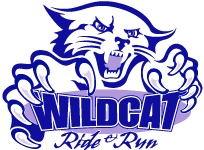 Hello Fellow HAMS:
Hello Fellow HAMS:
The Pedal Festival ride/run has changed its name. This year the Wildcat Ride and Run is asking for our assistance with communications. The event is on September 21st this year.
This ride will have 2 different routes (32 mile and 59 mile). There is a 91 mile route option that is the two other routes combined. There will be a 5K run and several other small events along with the ride. Our primary goal is the 91 mile riders and the breakpoints. All the routes start and finish in Selma at the OLPH church and school. I am in need of operators for the break points and some motor cycle marshals to help keep an eye on the course. If I get a large response, we can look at putting operators with the SAGs.
This event is 3 weeks before the BikeMS, you can use it as a test run to get your feet wet before the big one. If you are interested in helping with this event, please contact me with your info.
Information Summary:
- Event: 2013 Wildcat Ride and Run http://www.wildcatriderun.com/
- When: Saturday, September 21, 2013
- Open Positions: Breakpoint Operators, Motor Marshals, SAG Comms
- How to volunteer: Email Jeremy Davenport (jeremy@heitx.com) or phone 830.743.0004
Thanks and I look forward to working with you.
Jeremy Davenport, KE5ELI
jeremy@heitx.com
830.743.0004
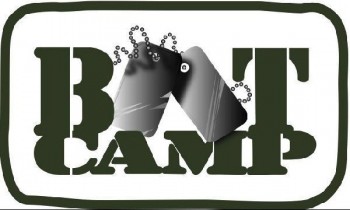 Another small portion of our 200 page “Jump Team Boot Camp” training manual – Next Class Is Scheduled for April 2014
Another small portion of our 200 page “Jump Team Boot Camp” training manual – Next Class Is Scheduled for April 2014
(Be sure to read earlier blogs concerning other aspects of emergency communications and the blog about the upcoming “Jump Team Boot Camp” , a 3 day “get down and dirty” training course.)
by Bob Hejl W2IK
In 1998, I was airlifted via National Guard helicopter to supply emergency communications out of a medium size town in upstate New York. The town had been cut off in every way from the outside world due to an ice storm. Talk about improvising! Talk about pressure! I was lucky enough to find some very helpful people who went out of their way to make sure my communications deployment was successful.
We took turns siphoning fuel from trucks so the two generators could be kept running to supply lights, power to run the boiler system for heat and radio power at the local school which acted as a shelter and gathering place where news could be disseminated. Many of the local homes had wood stoves or fireplaces for heat, but there were some that did not and although 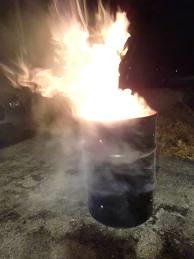 many who didn’t were invited into neighbor’s homes, about 100 opted to stay at the shelter.
many who didn’t were invited into neighbor’s homes, about 100 opted to stay at the shelter.
Since many people were hanging out in the area outside the school, I even suggested that if we had some empty 55 gallon drums we could get some heat from wood burning just like you’ve seen in depression movies. (outdoors, of course) A few minutes later several drums were there, in place, fueled with wood and lit. Neighbors who hadn’t seen or talked to each other in a while were standing around these lit barrels trading stories and getting caught up on “local news”. It made everyone feel as if it were one big winter block party! Everyone in the town contributed what they could to help their neighbors weather this event.
I kept in constant contact, via 40 meters, to the state capitol, giving them updates, requests and getting news and answers to questions. The ground was frozen solid so using stakes to erect an antenna was impossible. I had to lash my antenna’s center pole (using bungee cords) to a truck body while keeping the antenna ends secured with cement blocks. After almost a week, the roads were again open but through it all I improvised whenever there was a problem which needed a solution.
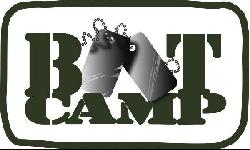 A small section from our 200 page “JUMP TEAM BOOT CAMP” training manual
A small section from our 200 page “JUMP TEAM BOOT CAMP” training manual
by Bob Hejl – W2IK
Your Em-Comm deployment group is only as good as the antennas they use. With this in mind, you must use antennas that are “tried and true” yet simple to erect in an emergency. They DO NOT have to be expensive. They should not be an elaborate concoction of wires or elements (NO BEAMS… You are NOT working DX as 99% of all HF emergency communications will be on the lower HF bands and probably not more than 300 miles).
There was only one case in over 20 years where I had to do emergency communications using 10 meters and this was communicating from New York to Hawaii (which had a hurricane) and relay the traffic back to California because due to propagation neither Hawaii or California could hear each other.
Your antennas DO have to work – every time and under a myriad of conditions such as freezing weather, monsoon-type rains, sustained winds or sizzling heat. They must also be stored and ONLY used for deployment purposes. They should not be something you scrounge together before heading out for a deployment. Back up antennas are vital. You need to have redundancy (two of each antenna so if there is a problem, such as a branch falls down on one that makes it un-repairable, or a failure such as a center connector breaking or burning out, it will not prevent you from getting on the air)
There is NO SUCH THING AS A “MIRACLE ANTENNA” no matter what you’ve read in ads or what a few hams “swear” by.
Emergency deployment is no game. If you need a question answered about a particular antenna, feel free to email me: alonestaryank@aol.com
 The ham community has been supporting the annual Tour for Children bicycle ride since 2011.
The ham community has been supporting the annual Tour for Children bicycle ride since 2011.
But last year was the first time we actually drove the SAG trucks that were donated by Toyota of Boerne.
Apparently, there “some issues raised” that weren’t brought to our attention until this month, today in fact.
Due to those “issues” and the fact that the organizing committee was apparently blissfully unaware of what the hams do during this type of event, they’ve chosen to ride without us this year.
The event is still being held on September 14, 2013, starting at El Chaparral Restaurant in Helotes (Start/Finish) and various lengths of routes going as far north as Boerne. For the past couple of years, they’ve had around 500 riders.
We truly wish them the best of luck and hope they have a safe and successful event without any of the incidents that would have likely been avoided had they utilized our experienced SAG drivers and other hams to increase overall rider safety on the course.
In the meantime… all of the Ham Radio operators who had originally planned on donating that Saturday to help “the cause,” are welcome to come hang out with the members of Hill Country REACT instead, while we assist the Village of Bulverde with the 2013 Bulverde Jubilee, including “the world’s shortest parade” at 11am. (On FM1863, west of Hwy 281) Truly, the parade route is about 1/4 the length of the staging area, about a city block long. Date is also Sept 14th, starting at 8am.
Contact Charlie KC5NKK via email for details.
